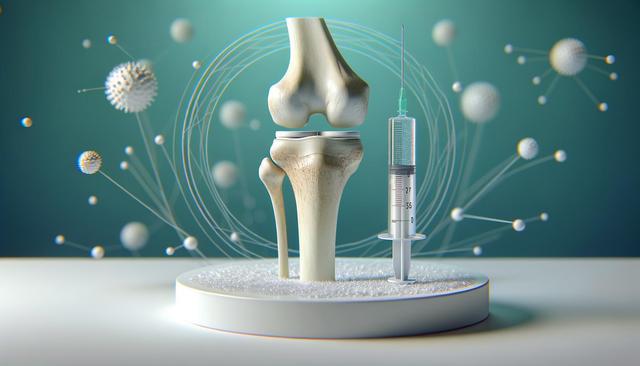Understanding Knee Gel Injections
Knee gel injections, also known as viscosupplementation, are a non-surgical treatment option designed to relieve joint pain caused by osteoarthritis or other degenerative knee conditions. These injections typically involve the use of hyaluronic acid, a substance naturally found in the synovial fluid that lubricates and cushions joints. As osteoarthritis progresses, the natural hyaluronic acid in the knee may break down or decrease, leading to increased friction, inflammation, and pain during movement. By supplementing this fluid, knee injections aim to restore joint function and slow the degeneration process.
The concept behind viscosupplementation is to improve the viscosity of the joint fluid, thereby enhancing the knee’s shock-absorbing capability and reducing pain. For many individuals, especially those who are not yet candidates for surgery, this treatment offers an alternative path to managing chronic knee discomfort. While not a cure, it can provide notable improvements in quality of life over time.
How Hyaluronic Acid Works in the Knee
Hyaluronic acid acts as a lubricant and shock absorber in the joints. When injected directly into the knee, it supplements the existing synovial fluid, helping to improve joint movement and reduce discomfort. The injection is typically administered in a clinical setting and may require one or multiple sessions depending on the specific product used and the patient’s needs.
These injections can be particularly useful for individuals who:
- Experience mild to moderate osteoarthritis symptoms
- Have not responded well to physical therapy or oral medications
- Are seeking to delay or avoid knee replacement surgery
- Have contraindications to other forms of treatment
Most people begin to notice symptom relief within a few weeks of treatment. The effects can last between several months to a year, depending on the individual response and lifestyle factors.
Benefits and Considerations
One of the primary benefits of knee gel injections is their ability to reduce inflammation and discomfort without the need for invasive surgery. They are often used when other conservative treatments like weight management, exercise, and oral medications have not provided sufficient relief. Additional benefits include:
- Improved mobility and flexibility
- Enhanced ability to perform daily activities
- Minimal downtime after the procedure
- Low risk of serious side effects
However, like all medical treatments, hyaluronic acid injections are not suitable for everyone. Individuals with allergies to avian proteins (found in some gel products), infections in the knee area, or bleeding disorders should consult with their healthcare provider before proceeding. It’s also important to set realistic expectations. While many patients experience reduced pain, the injections do not reverse joint damage or cure arthritis.
What to Expect During and After the Procedure
The procedure for knee injections is relatively straightforward. After disinfecting the area, a healthcare provider will inject the gel directly into the knee joint using a fine needle. In some cases, excess fluid may be removed from the joint before the injection to improve effectiveness. The whole process usually takes only a few minutes and is performed in an outpatient setting.
Post-procedure care typically involves:
- Avoiding strenuous activity for 24–48 hours
- Applying ice to the area if mild swelling or discomfort occurs
- Following up with the provider to assess effectiveness
Patients are usually able to walk out of the clinic and resume most of their normal activities shortly after. It’s common to experience gradual improvement over several weeks rather than immediate results. Regular assessments by a healthcare provider help determine whether additional injections may be needed or if alternative therapies should be considered.
Long-Term Effectiveness and Outlook
While knee gel injections do not provide a permanent solution, they can play a meaningful role in long-term joint health management. Many patients find that routine injections, combined with lifestyle modifications, allow them to postpone or avoid more invasive procedures like total knee replacement. The effectiveness of this treatment varies depending on the severity of joint degeneration, the patient’s overall health, and adherence to supportive treatments such as physical therapy or weight management.
For some, incorporating regular low-impact exercises, maintaining a healthy weight, and monitoring joint health can enhance the benefits of hyaluronic acid injections. It’s also important to stay informed about new developments in joint care, as ongoing research may lead to improved treatment options in the future.
Conclusion: Is This Treatment Right for You?
Knee gel injections offer a practical and effective option for individuals seeking to manage knee pain without surgery. By supplementing the joint’s natural lubrication, these injections can reduce discomfort, improve mobility, and support daily function. While they may not be a universal solution, they are a valuable part of the broader toolkit for managing knee osteoarthritis and related conditions.
Anyone considering this treatment should consult a qualified healthcare provider to evaluate whether hyaluronic acid injections align with their specific condition and medical history. With the right guidance, these injections can be an important step toward achieving a more active and comfortable lifestyle.
